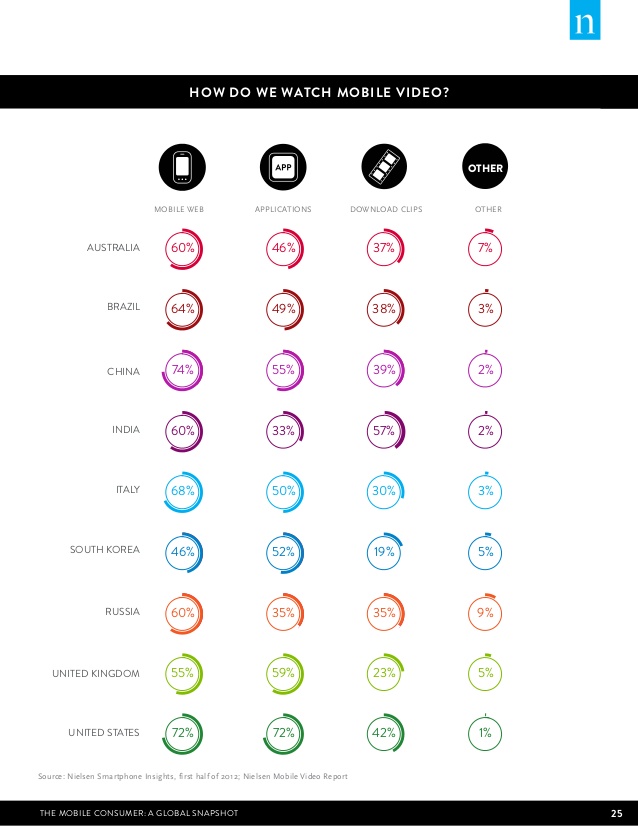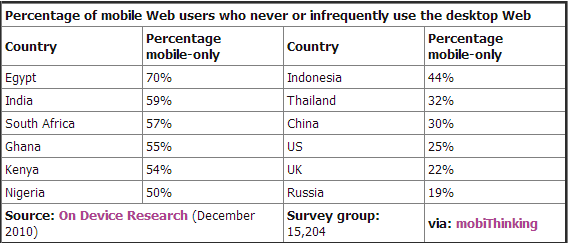
What do you know about mobile video advertising? Well, for every 7 people using mobile phones only one of them is using a smartphone. There are an estimated 6 billion mobile phone subscriptions in the world, which begs the question, “Are you tapping into the feature phone market yet?”
There’s no doubt in anyone’s mind that smartphones are taking the world by storm. However, there is a huge misconception regarding the global reach of smartphones and mobile video as a result. The fact is global smartphone integration is going to take some time, years or perhaps even decades to reach market saturation. It’s important for brands to think about the future in terms of the next big opportunity for growth. The here and now needs attention too and feature phones are a predominant part of the current mobile marketing climate.
How big is the feature phone market?
2013 is the first year that smartphone shipments outpaced that of feature phones – but only just. In fact, of the 426 million mobile devices sold in Q1 of 2013 – 49.3% of them were feature phones, just under half.
Global companies such as Facebook have recently recognised the importance of feature phone compatible technology with the release of a native app for feature phones which has since received over 100 million downloads. By tapping into the feature phone market, Facebook is experiencing some serious worldwide growth and is becoming an integral part of the web experience in emerging countries.
The size of the feature phone market has also been noticed by several news outlets and publications as popular sites such as Quartz, Mashable and the BBC have all recently reported on the scale of feature phones users and how they are wrongly overlooked by brands and developers.
How important is video?
Dr James Mcquivey of Forrester Research once said that just one minute of video is equal to 1.8 million words. This fascinating conclusion goes a long way in explaining why video has become so popular. Using video, brands are able to capture and convey emotion and information in far less time than it would take for a consumer to read a page of text. Brands win because video is far more engaging and effective and consumers win because they get the information they need with little to no effort on their part.
Video consumption is fast becoming one of the most popular activities carried out on mobile phones with billions of video views generated every month across the globe through feature phones accessing the mobile web. Research carried out by Cisco suggested that by the end of 2015 video will be responsible for 66.4% of the mobile data consumed.
There is much discussion surrounding how video is consumed via mobile devices, but a recent study from Nielsen (2013) discounts beliefs that smartphone applications are driving more video views than the mobile web. Shown clearly in Fig.1 we can see that the mobile web is the most popular option for viewing mobile video in the majority of participating countries.

What opportunities do feature phones present for brands?
Many brands are using online video ads to target desktop and smartphone audiences, but brands have the opportunity to extend their reach and revenue with ease by tapping into the highly profitable feature phone market through video advertising.
International brands or brands which are specifically targeting emerging countries have the most to gain from video advertising on feature phones. This table in Fig. 2 shows countries in which the population have forgone desktop computers entirely in favour of mobile web internet access only demonstrating the incremental reach a feature phone video campaign would have in these geographic locations.
Fig.2

How can publishers monetise feature phone traffic?
In terms of feature phones, technology seems to be working backwards. Many developers are on a constant strive to develop the next big app or SDK for smartphones, but in the past two years a handful of developers thought, “Hang on a second – over half the population are still using feature phones”. So, with thanks to emerging technologies for feature phones publishers can now start to monetise not just their mobile traffic from smartphones but also that of feature phones too.
The development for mobile web SDKs and feature phone app SDKs will allow publishers to unlock revenue from traffic they are already getting to their mobile sites. As data plans become more affordable and mobile phone battery life improves, consumers will become inseparable from their mobile devices as a source of information and entertainment, thus driving the amount of video consumed through the mobile web.
Conclusion
It’s clear that for the next 5-10 years, feature phones will continue to be a more integrated mobile device globally than smartphones. If brands want to grow and target emerging countries, then feature phones provide a logical and potentially lucrative opportunity for doing so.
Publishers can ensure that they are not missing out on the opportunity presented by feature phones by integrating advertising technologies such as the AdSpruce mobile web SDK which allows them to monetise more of the mobile traffic to their site to generate new revenue.
As for the debate on smartphones replacing feature phones – there will always be price conscious consumers and feature phones will always be leading the affordable mobile device market. Therefore it remains as logical business sense to include feature phones as part of marketing and business development strategies in the foreseeable future.



